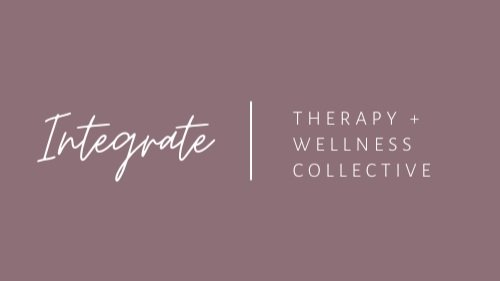When Endings Become Beginnings: Navigating the Emotional and Physical Shifts of a Breakup or Divorce
By Jen Bennethum, LCSW
Divorce and breakups are often framed as the moment something precious collapsed — a symbol of failure. Yet in truth, they are thresholds, invitations into a new chapter you may not have seen coming. These transitions are complex rites of passage where joy and sorrow share the same space, and where personal transformation often begins in the very place something else has ended.
“Every exit is an entry somewhere else.” – Tom Stoppard
The Emotional DNA of Separation
Every person’s experience carries a unique blend of what I call the “emotional genes” of separation. Grief arrives first for most — the tender ache of releasing shared dreams, familiar rituals, and the “we” you once were. Growth may follow closely, revealing your resilience, refining your boundaries, and showing you strengths you didn’t know you had. Gratitude often emerges in quieter moments, for the lessons learned and the parts of yourself that were shaped by love, even if it was imperfect.
Grit builds as you endure the practical demands — legal processes, shifting routines, emotional turbulence. And then there is glee, sometimes gentle, sometimes fierce — the freedom to breathe again, to make choices without compromise, and to reclaim the space to dream on your own terms. These emotional strands weave together, shaping how you navigate the transition.
The Science of Heartbreak and Healing
While we often think of breakups as purely emotional, neuroscience shows they ripple through our entire biology. Increased cortisol levels during separation can fuel stress, disrupting sleep and digestion. Fluctuations in dopamine and serotonin can lead to mood swings, moments of elation, and periods of deep fatigue. Your nervous system is recalibrating — moving from a familiar state of “we” to the less charted terrain of “me.” Gentle somatic practices like grounding exercises, slow breathing, and mindful stretching can help stabilize these internal shifts, creating a bridge between body and mind.
Living in the Emotional Crosscurrents
Emotions during a breakup rarely appear one at a time. Liberation and doubt can trade places by the hour. Identity shifts can feel both thrilling and unsettling as you reintroduce yourself to yourself. For some, the end of a relationship unlocks unexpected creativity — painting, writing, movement, or travel — as emotional energy once tied up in conflict becomes available for self-expression. For others, healing deepens through connection: leaning into friendships, family bonds, or building a new support circle entirely.
Understanding your attachment style can also be illuminating here. If you tend toward anxious attachment, you might notice urges to seek constant reassurance, while an avoidant style may lean into withdrawal. Recognizing these patterns offers a chance to respond differently — to cultivate self-soothing and healthy interdependence rather than simply reacting to old wiring.
The Body’s Role in Letting Go
Your body narrates its own version of the breakup story. Sleep may be restless, heavy, or dream-filled. Appetite might waver — swinging between comfort food and an absence of hunger. Stress can settle in your jaw, shoulders, and back, while energy spikes and crashes unpredictably. The immune system may dip as your body reallocates resources to manage emotional strain. These are not flaws — they are signals. Responding with gentle self-care, steady routines, and nourishing foods is a way of telling your system, we are safe enough to heal.
Unlearning the Stigma
Our culture often glorifies beginnings and stigmatizes endings, especially in relationships. But around the world, some communities treat partings as moments worthy of ritual — not because they are painless, but because they are meaningful. Reframing divorce or breakup as a rite of passage frees you from the shame story, allowing you to mark the moment with as much reverence as you would a wedding or birth.
Creative Rituals for Closure
Ritual gives shape to the formlessness of loss. This can be as personal as burning letters, as nurturing as planting a tree, or as joyful as hosting a dinner with friends to honor what you’ve survived. Some craft art from old mementos, turning the remnants of the relationship into symbols of growth. Others take a solo trip, reclaiming their own company as a place of comfort and strength. Sensory-based rituals — lighting a candle, bathing in a favorite scent, moving in rhythm to music — can root your healing process in the body, not just the mind.
The Intersection of Grief and Celebration
One truth I return to again and again in my work is this: grief and joy are not opposites. They can and do exist together. Celebrating the end of a relationship does not erase its pain; it honors the wholeness of the story. You can acknowledge what was beautiful and what was harmful, what you’re letting go of and what you’re keeping with you. This integration is where deep healing begins.
Dating Yourself First
Before stepping into new romance, consider an intentional period of dating yourself. This isn’t about rules or timelines — it’s about rebuilding trust with your own heart. Take yourself on outings, explore hobbies alone, relish your own company. Learn the contours of who you are now, so that when you invite someone new in, it’s from a place of fullness, not emptiness.
Stepping Into the New Chapter
Breakups and divorces are not simply about endings; they are about transformations. Your personal blend of grief, growth, gratitude, grit, and glee will shape the way you walk into what’s next. By holding space for both ache and celebration, you plant the seeds for a self that is freer, wiser, and more fully alive than before. This is the quiet magic of endings: they are fertile ground for beginnings. Let us know at Integrate Therapy and Wellness Collective how we can help you through this transition or new beginning!!
